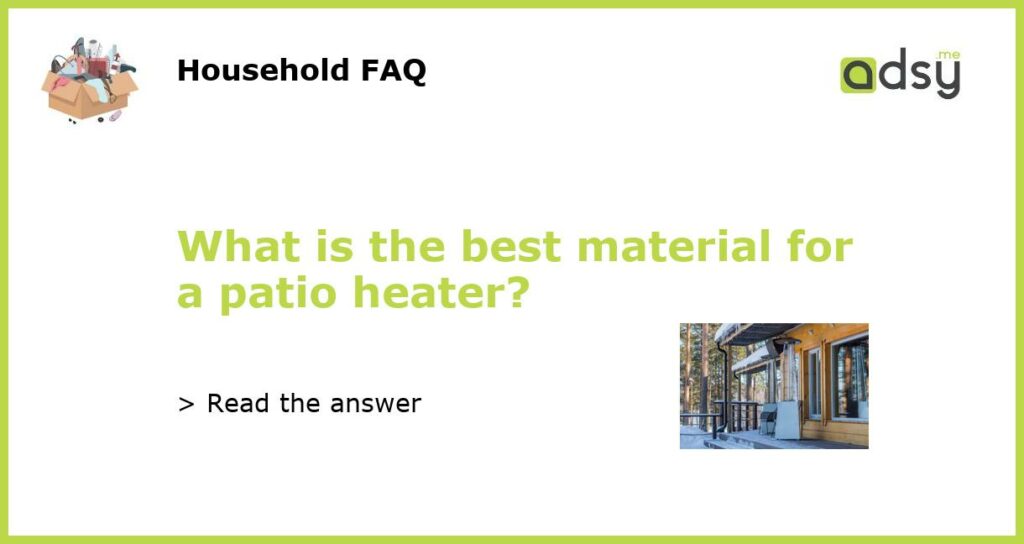The best material for a patio heater: A comprehensive guide
When it comes to patio heaters, one of the most important factors to consider is the material they are made of. The material not only determines the durability and longevity of the heater but also plays a crucial role in its overall performance and appearance. In this article, we will discuss the best materials for patio heaters and explore their advantages and disadvantages.
Stainless steel: The top choice for patio heaters
Stainless steel is widely regarded as the best material for patio heaters, and for good reason. It offers excellent durability, corrosion resistance, and heat retention properties, making it perfect for outdoor use. Stainless steel patio heaters are capable of withstanding harsh weather conditions, including rain, snow, and extreme temperatures.
Another advantage of stainless steel patio heaters is their aesthetic appeal. They have a sleek, modern look that can complement any outdoor decor. Additionally, stainless steel is easy to clean and maintain, ensuring your patio heater remains in excellent condition for years to come.
Cast aluminum: A durable and lightweight alternative
If you’re looking for a patio heater that combines durability with lightweight construction, cast aluminum is an excellent choice. This material offers exceptional corrosion resistance, ensuring that your patio heater remains in top shape even when exposed to the elements.
Cast aluminum patio heaters are also highly portable due to their lightweight nature. This means you can easily move them around your patio or backyard as needed. Additionally, they tend to heat up quickly, providing you with instant warmth and comfort.
Bronze: Adding elegance and style to your outdoor space
If you want to add a touch of elegance and style to your outdoor space, bronze patio heaters are worth considering. Bronze is a unique material that develops a beautiful patina over time, giving your patio heater a distinctive look.
In addition to its aesthetic appeal, bronze is also a highly durable material. It can withstand outdoor conditions without corroding or deteriorating. However, it is worth noting that bronze patio heaters may require more maintenance compared to other materials. Regular cleaning and polishing are necessary to maintain their shine and appearance.
Ceramic: A cost-effective and efficient option
If you’re on a budget but still want a patio heater that performs well, ceramic is an excellent choice. Ceramic heaters are known for their energy efficiency and effectiveness in providing localized heat. They generate radiant heat, which warms up objects and people directly, rather than heating the surrounding air.
Ceramic patio heaters are also lightweight and portable, making them easy to move around your outdoor space. However, keep in mind that ceramic can be more fragile than other materials, so it’s important to handle and store the heater with care.
Copper: Combining functionality and beauty
Copper patio heaters offer a unique combination of functionality and beauty. Like bronze, copper develops a patina over time, lending a timeless charm to your outdoor space.
In terms of performance, copper is an excellent heat conductor, allowing for efficient and effective heating. However, it is worth noting that copper patio heaters tend to be more expensive compared to other materials. Additionally, they require regular maintenance to prevent corrosion and maintain their appearance.
Choosing the best material for your patio heater ultimately depends on your specific needs and preferences. Stainless steel is highly recommended for its durability, while cast aluminum offers a lightweight and portable option. Bronze and copper are ideal for those looking to add style and elegance to their outdoor space, while ceramic offers a cost-effective and efficient choice. Consider your budget, climate conditions, and aesthetic preferences before making the final decision.






